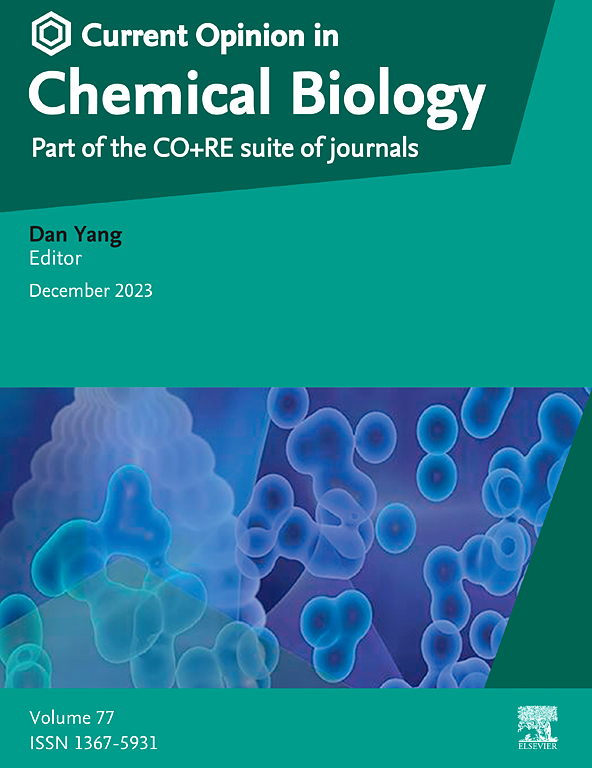YEATS结构域蛋白质的小分子工具。
IF 6.9
2区 生物学
Q1 BIOCHEMISTRY & MOLECULAR BIOLOGY
引用次数: 0
摘要
染色质阅读结构域是与组蛋白和其他染色质相关蛋白的翻译后修饰结合的蛋白质折叠。与其他读者结构域家族相比,YEATS结构域与酰化赖氨酸结合的发现相对较新。四种人类蛋白质含有一个YEATS结构域,每种蛋白质都存在于调节染色质和转录的蛋白质复合物中(ENL、AF9、YEATS2和YEATS4)。如果没有化学工具来实现时间分辨的扰动,通常不清楚读者结构域如何对蛋白质功能做出贡献。在这里,我们将讨论为YEATS结构域开发小分子工具的最新进展,并强调它们对生物学发现的有用性。本文章由计算机程序翻译,如有差异,请以英文原文为准。
Small-molecule tools for YEATS domain proteins
Chromatin reader domains are protein folds that bind to post-translational modifications of histones and other chromatin-associated proteins. Compared to other families of reader domains, the discovery that YEATS domains bind to acylated lysines is relatively recent. Four human proteins harbor a YEATS domain, and each is present in protein complexes that regulate chromatin and transcription (ENL, AF9, YEATS2, and YEATS4). Without chemical tools to enable temporally resolved perturbations, it is often unclear how reader domains contribute to protein function. Here, we will discuss recent progress in developing small-molecule tools for YEATS domains and highlight their usefulness for making biological discoveries.
求助全文
通过发布文献求助,成功后即可免费获取论文全文。
去求助
来源期刊

Current Opinion in Chemical Biology
生物-生化与分子生物学
CiteScore
13.30
自引率
1.30%
发文量
113
审稿时长
74 days
期刊介绍:
COCHBI (Current Opinion in Chemical Biology) is a systematic review journal designed to offer specialists a unique and educational platform. Its goal is to help professionals stay informed about the growing volume of information in the field of Chemical Biology through systematic reviews.
 求助内容:
求助内容: 应助结果提醒方式:
应助结果提醒方式:


